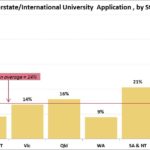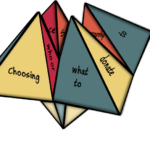How Aus $ affects Aus votes

There is no correlation between an electorate’s socio-economic standing and its preferred political party, at least not in the 2013 elections.
The simplistic view of politics suggests one party proposes policies which help poor people and the other party angles to improve the lives of those more fortunate. Yet, in Australia, the socio-economic make-up of an electorate is a very poor predictor of which party will be voted in, at least not nation-wide. It seems Labor electorates are not the working class suburbs usually portrayed, and Liberal electorates aren’t the prime real estate so often generalised.
This is clearly seen when focusing on the top 10 Liberal/National coalition seats.

As the graph above shows, the ‘rich’ are grossly under-represented in the top 3 ‘liberal/national’ seats, and in three more of the safest Liberal seats. On the other hand, they are hugely overrepresented in the other 4 of the top 10 seats (averaging 85% of each overrepresented electorate). As an example, Mallee, on the NSW/Victorian border, has the highest Liberal vote, yet over 50% of the population falls in the bottom 30%, and only 6% are considered in the top 30% of Australia.
The graph below examines the link across all the electorates, by mapping the Labor 2-party preferred vote to the percentage of the electorate which falls in the bottom 30% of the socio-economic spectrum. (It’s a mess!)

Similarly, there appears to be no relationship between party allegiance and private schooling. For all the apparent willingness of the Liberal party to support private schools, areas with a high percentage of kids attending private school are just as likely to vote blue as they are red.

While it seems there is no link between ‘class’ and politics Australia wide, a relationship does exist within capital cities. Filtering out electorates which have less than two-thirds of its population within a capital city (using ABS’s remoteness divisions), a correlation of 0.51 appears between the Labor vote and areas with high proportions of low socio-economic households. This means that the larger the percentage of ‘lower class’ households in an electorate, the more likely Labor is to win the seat. Similarly, the more rich households there are in a city electorate, the more likely the Liberal Party is to win.
(Graph slightly less messy.)

No such link appears to occur outside of the major cities, neither in regional cities nor in rural areas.
So, are parties not catering to one side over the other, or are constituents unable to discern how each party’s policies will affect them, or do people not vote based on what may benefit them? Or is politics a whole lot more complicated than that?
______________________________
Sources
Voting from Australian Electorate Commission http://results.aec.gov.au/17496/Website/HouseDownloadsMenu-17496-csv.htm
Socio-economic and School attendance from ABS, Census Statistics.
http://www.abs.gov.au/websitedbs/censushome.nsf/home/Census?opendocument&ref=topBar
















